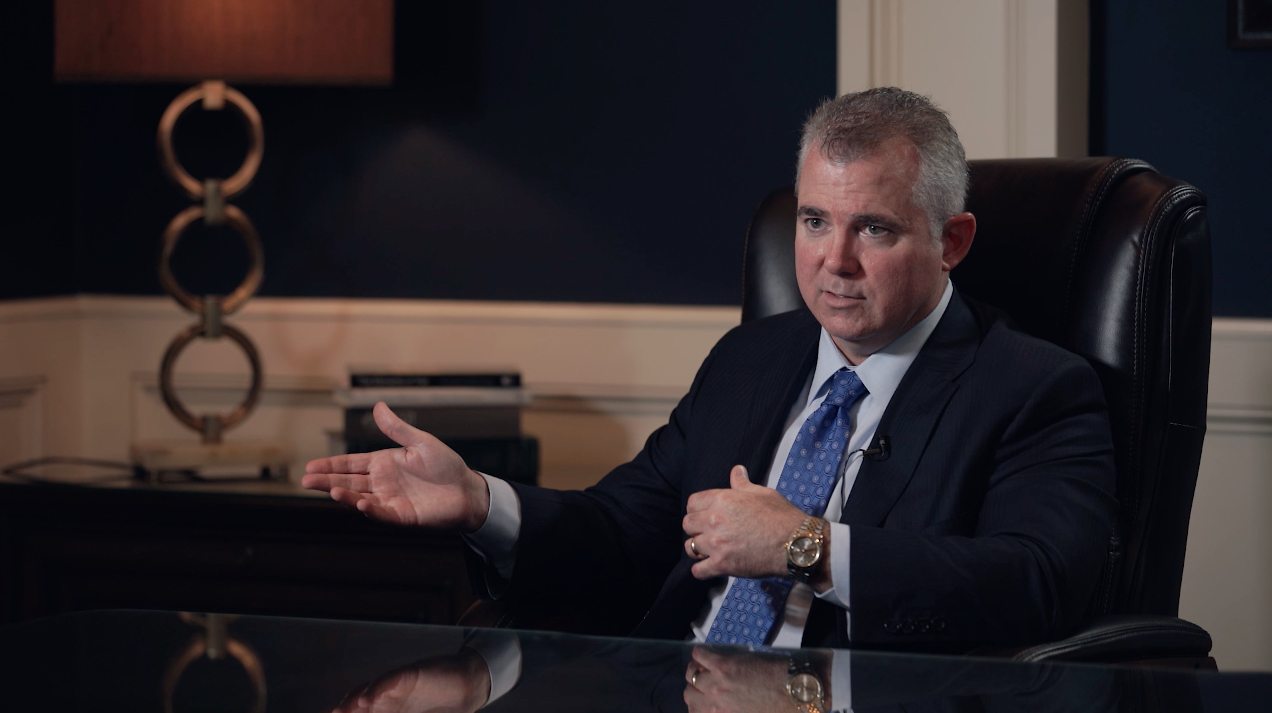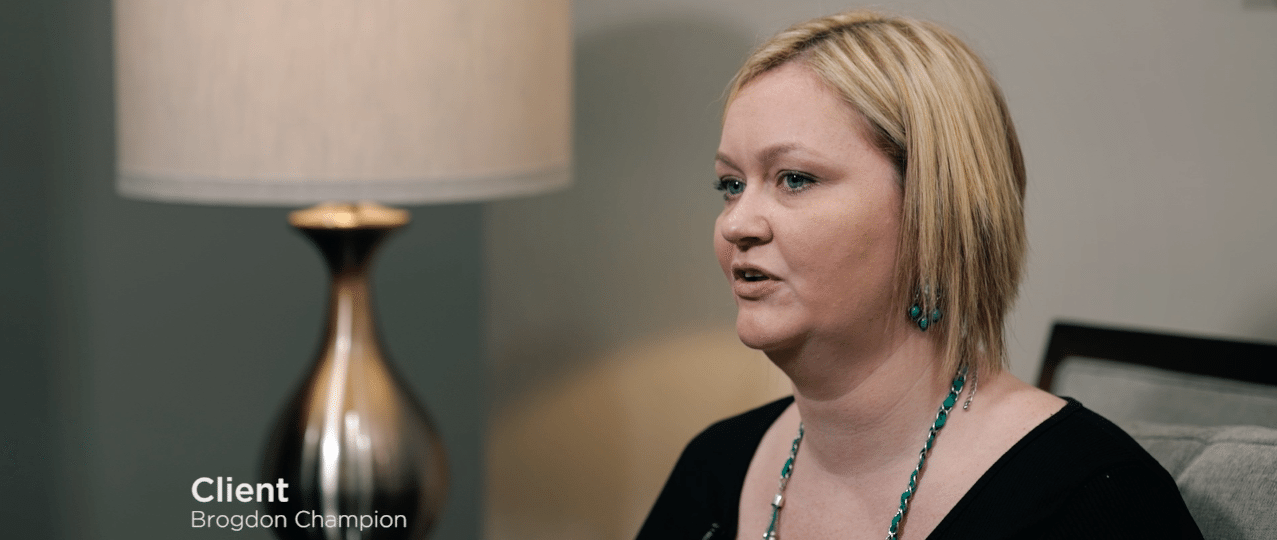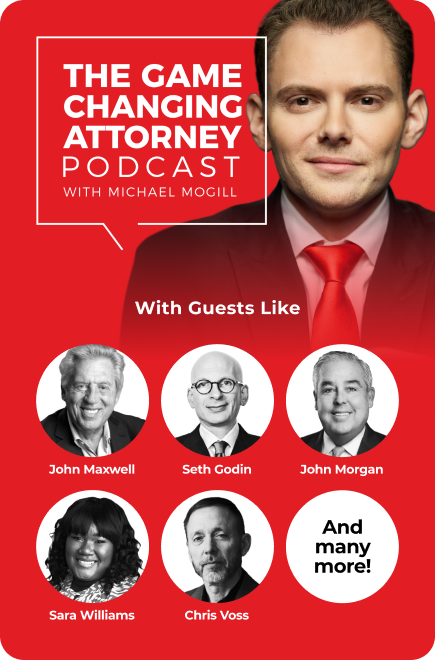
With 1.3 million attorneys in the U.S. (that’s 1 for every 265 people!), the biggest challenge isn’t always faced in the courtroom, but rather in the marketing department.
With hundreds of thousands of attorneys competing for the same clients, how can your firm stand out and attract more high-value cases? Your specific practice area alone won’t differentiate your firm. What can, however, is sharing your firm’s story through legal video.
People hire law firms based on trust. By visually telling your story to connect with potential clients, you humanize your firm to build trust and rapport. Once that trust is built, the stage is set to turn a lead into a consultation and then into a client.
Here are 5 ways attorneys can use storytelling to attract more cases:
1. Understand Your Audience

The first step of any marketing strategy is understanding your audience. What are their demographics, pain points, values, etc.? Once you understand your audience, you can tailor your message to communicate specific solutions to their goals and problems.
Is your typical client looking for the most affordable solution to their legal problem? Or, does your client base look for the best solution? How familiar are they with the legal process? What emotions are they feeling when they call you?
These things vary greatly across firms and practice areas, but once you understand your audience, you can use your unique story to appeal to them.
2. Highlight Your “Why”, Not Your “What”
With hundreds of thousands of attorneys offering similar services, what you do may not be enough to differentiate your law firm. Strive to communicate your unique value proposition through your “why.”
Your “why” helps build trust with potential clients by establishing the reasons for doing what you do and communicating that through your message. Why should they hire you over every other attorney out there?
In the video below, personal injury attorney Gregory Herrman begins with the statement, “What I’ve always wanted to do is help injured people. I feel like that’s my mission in life.”
He immediately connects viewers to his story by focusing on the “why” of what he does (helping people), rather than the what (practicing personal injury law). In two sentences, he cuts to the core of his audience’s need — getting help.
He establishes trust by identifying with potential clients’ problems, and emphasizes this through his “why.” Would his message be as powerful if he focused on years of experience or accolades? Perhaps it would matter to other attorneys, but likely not as much to potential clients.
Connections are often driven through stories, and less through years practiced and honors achieved. Tailor your content to reflect this, and you will create video content that drives viewers to engage with your practice.
3. Drive an Emotional Connection
The art of marketing is the interplay between the logical mind and the emotional heart. When it comes down to it, people make most of their decisions based on emotion, not logic.

This is because:
- Emotion requires less effort than logic. Logic solicits cognitive effort, whereas emotion is automatic (subconscious)
- Messaging aimed at engaging your viewers’ (prospective clients) emotions are more interesting and memorable than solely logical ones
- Emotion-based arguments are often easier to recall than logic-based arguments
- Emotion almost always leads more quickly to change than logic does
Sources: P. Salovey and J. D. Mayer, “Emotional Intelligence: Imagination, Cognition, and Personality,” reprinted in Human Emotions, J. M. Jenkins, K. Oatley, and N. L. Stein, editors (Oxford: Blackwell Publishers, 1998), pp. 313–319. Tellis, Advertising and Sales Promotion Strategy, pp. 160–161.
Don’t tell prospective clients what to think or what’s best (selling). Instead, help them discover for themselves what feels right, best, and most advantageous through emotional storytelling. Ultimately a potential client’s decision is based on their own self-interest.
With this knowledge, you can use your unique story to connect with potential clients, build rapport, and inspire trust.
The keys to building an emotional connection through storytelling are:
- Begin with something relatable, and something your audience can agree with
- Increase tension with difficulties the characters must overcome (Ex: legal issue like criminal charges, an injury, divorce, etc.)
- Climax where characters overcome the problem / challenge, and provide a solution
- Provide hope / call to action (drive action)
Attorney William Bly (The Law Office of William T. Bly), embodies these ideas with his legal marketing video below:
4. Use Client Testimonials

No one can communicate the benefits of your services better than someone who has experienced them. When looking to share your story with potential clients, one of the best ways to do this is through client testimonials.
At 89%, client testimonials have the highest effectiveness rating for all types of content marketing. Furthermore, 92% of consumers around the world say they trust earned media (testimonials, reviews) above all other forms of advertising.
Incorporating client testimonials in your legal videos will build rapport and communicate your story through the lens of someone who has experienced it.
5. Create Quality Content

Remember, your marketing is a direct reflection of your law firm. Potential clients often see brand image as the differentiator between good and bad attorneys, and high-quality (and high-value) clients can be deterred by low-quality video content.
A recent study by Aberdeen has shown that high-quality videos improve conversion rates by as much as 300%, while low-quality video content can actually hurt conversion rates.
62% of consumers are more likely to have a negative perception of a business that published a poor-quality video. If you want to communicate value and attract higher-value cases, your video marketing strategy needs to reflect this goal. Creating quality content will help you brand your law firm as authoritative.
In a world crowded with competition, your unique story allows you to connect with potential clients, build trust, and address the things that matter to them most.
If you understand your audience, communicate your “why,” drive an emotional connection, incorporate client testimonials, and create quality content, you will be able to create legal video content that drives new clients and cases.
Everyone loves a good story. It’s your job to tell yours.






